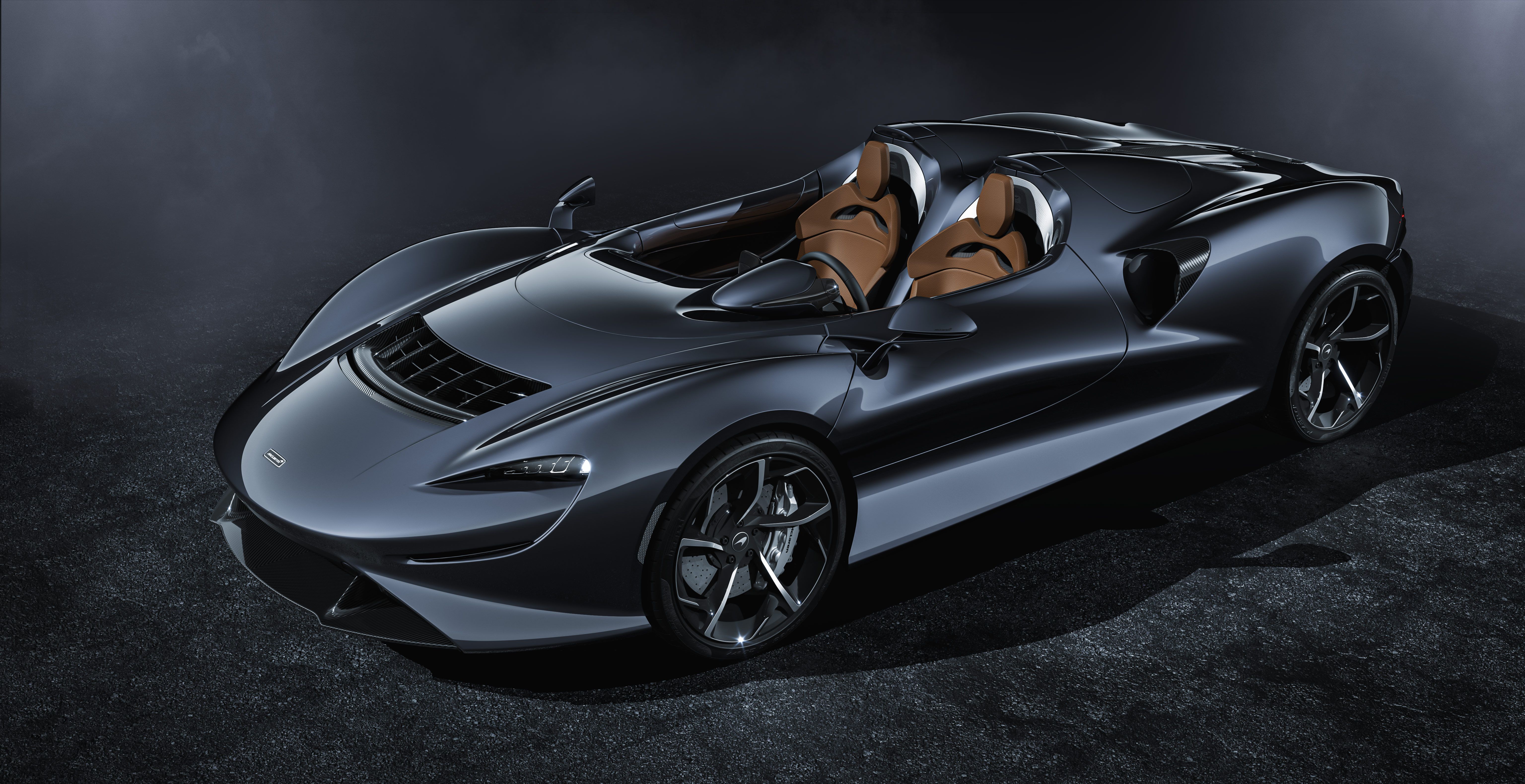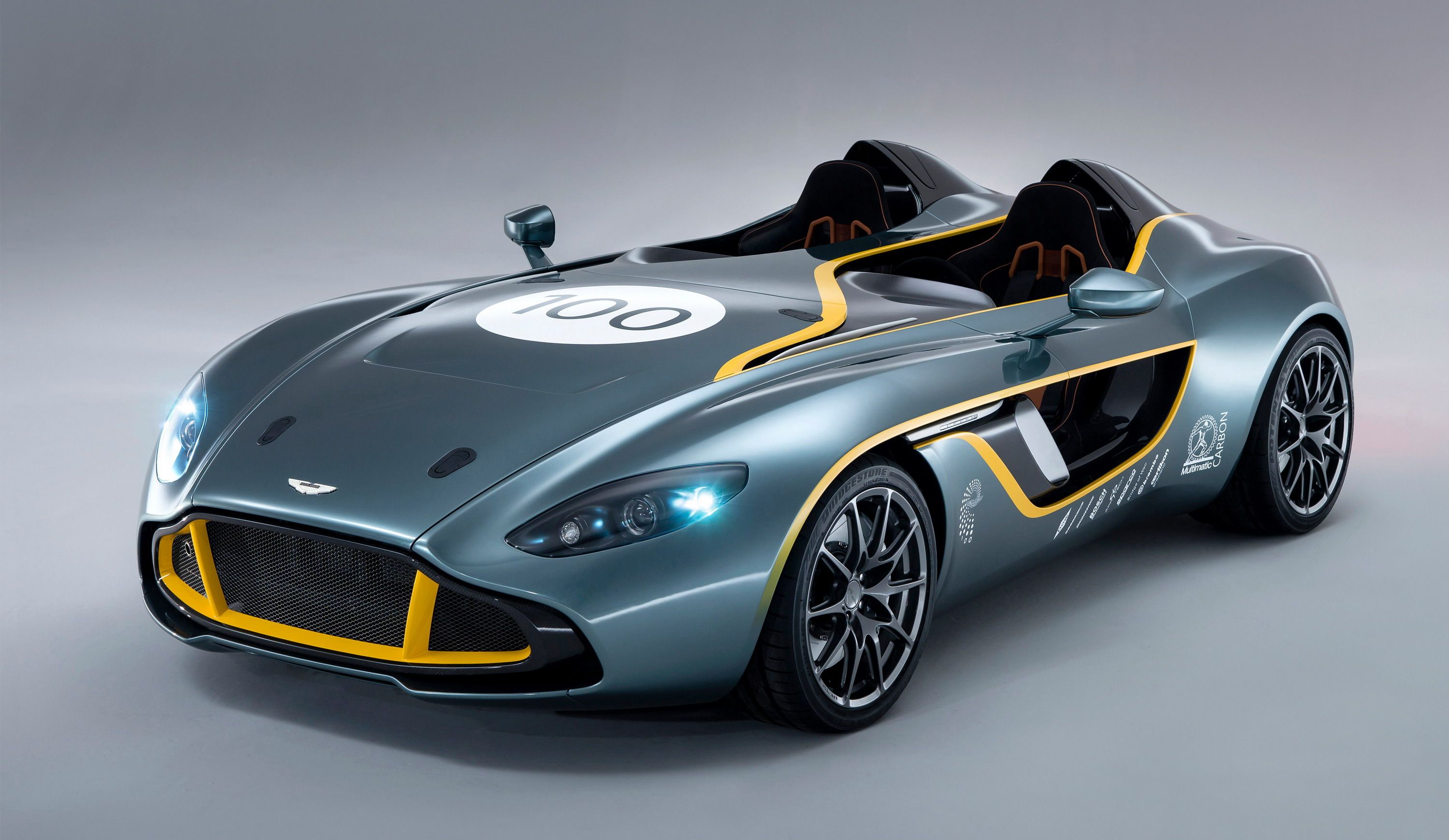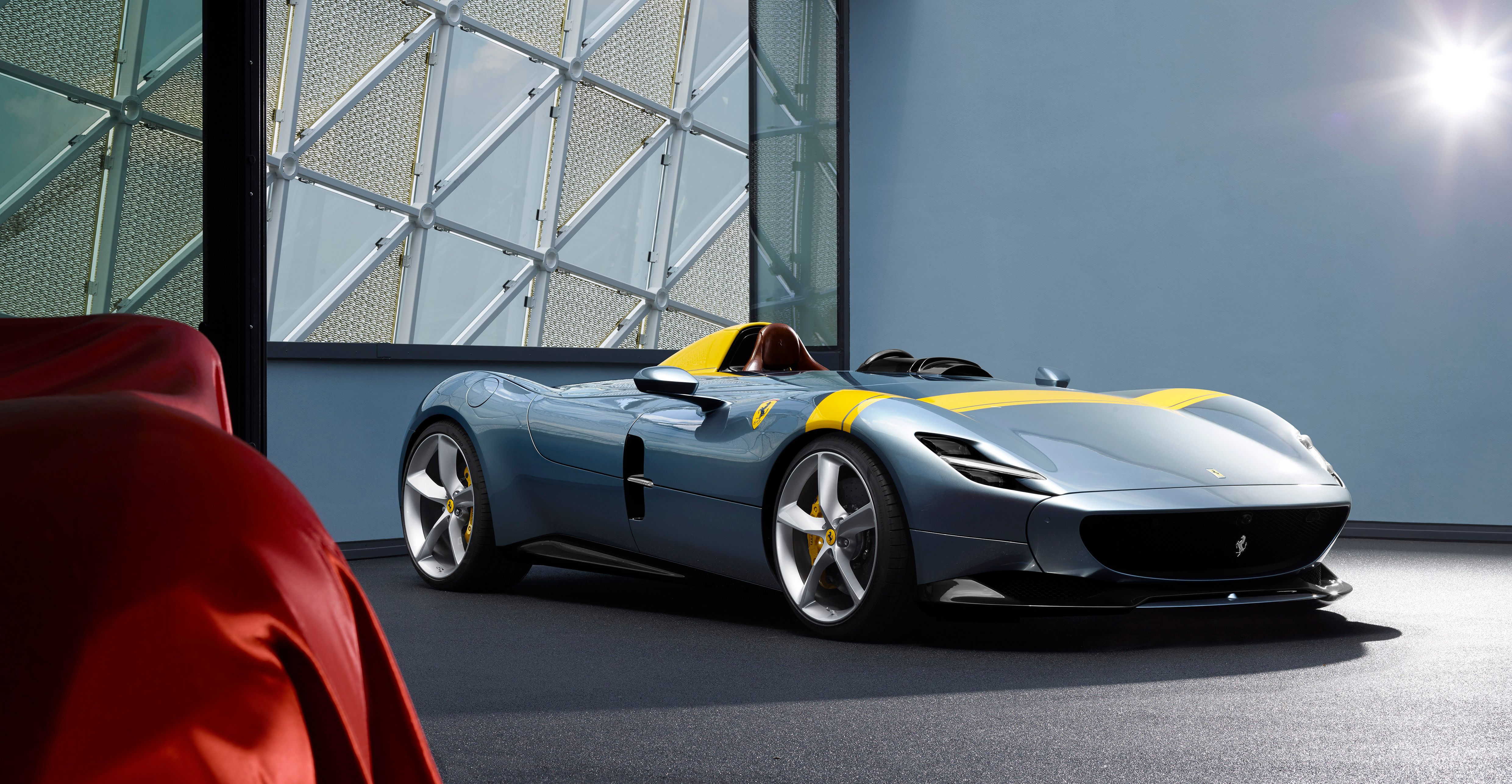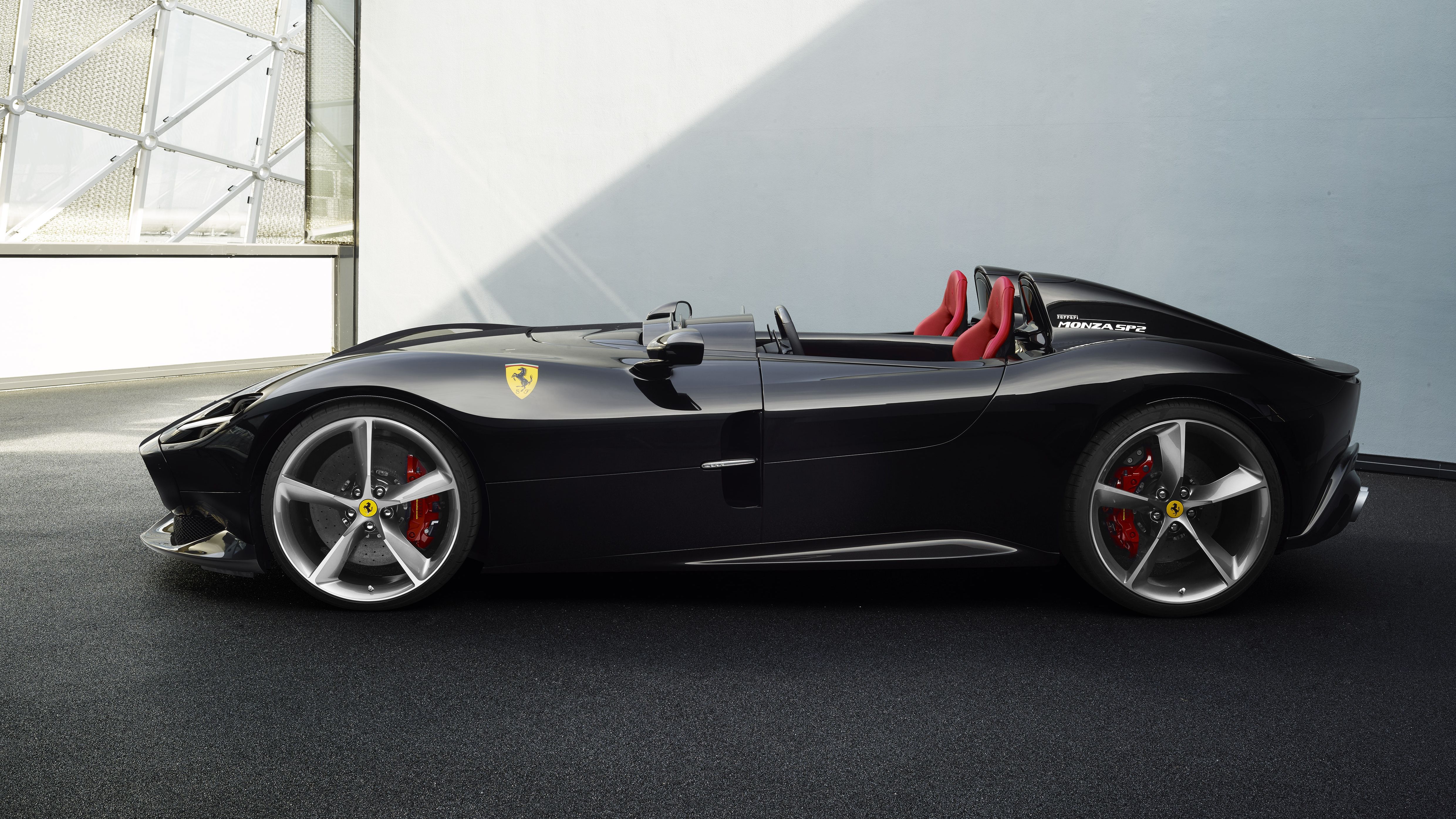McLaren unveiled the Elva supercar earlier this week, and among its many unique features, it included one that has become trendy among supercar brands in recent years. Folks, the Elva is the first production McLaren that doesn’t have a windshield. In fact, it doesn’t have a roof, either. Windows? What are those?
As striking and unique as the Elva is, it’s not the first performance car to adopt this kind of appearance. In this decade alone, there have been a number of other performance vehicles that were created with the little-to-no-windshield design. Some arrived as concepts while others turned into production models. Either way, these five vehicles pulled the design off to varying degrees of success.
Aston Martin CC100 Speedster Concept
You could chalk up the speedster-style body and the see-through doors as products of that goal, but it’s the invisible windscreen that caught a lot of people’s attention. Not only did it make the CC100 Speedster Concept look sexy as heck, but it also showed that Aston Martin wasn’t beyond getting a little creative in showcasing its future design language. Parts of the concept's design have since found their way into current Aston Martin models so I’d say the CC100 served its purpose, even if the invisible windshield didn’t make it anywhere close to any of Aston Martin’s current model lineup.
For what it’s worth, }}the CC Speedster was powered by a zesty V-12 engine that produced 565 horsepower}}. The unit was paired with a six-speed sequential transmission that sent power to the CC100’s rear wheels, enabling the concept to sprint from 0 to 60 mph in four seconds on its way to an electronically limited top speed of 180 mph.
Aston Martin CC100 Speedster Concept specifications
|
Engine |
V-12 |
|---|---|
|
Horsepower |
565 |
|
0 to 60 mph |
4 seconds |
|
Top Speed |
180 mph |
Read our full review on the 2014 Aston Martin CC100 Speedster Concept
Lamborghini Aventador J
For the most part, though, the Aventador J was a truly singular creation. Only the front hood, front fender, rear fender, and headlights remain from Lambo’s big V-12 coupe. All its other panels were created new and in-house, as per the directive of then-CEO Stephan Winkelmann. The Aventador J also didn’t have a radio or air conditioning, largely due to weight-saving reasons. It’s also the only model of its kind in the world. Yes, there’s only one Lamborghini Aventador J in the world, and, most astonishingly, it only took Lamborghini’s team of designers and engineers six weeks to develop and build the car from the ground up.
Lamborghini Aventador J specifications
|
Engine |
6.5-liter V-12 |
|---|---|
|
Horsepower |
690 |
|
Torque |
509 |
|
0 to 60 mph |
2.9 seconds |
|
Top Speed |
186 mph |
Read our full review on the 2012 Lamborghini Aventador J
Ferrari Monza SP1 and Monza SP2
For an automaker that prides itself on dropping bombshells, Ferrari outdid itself last year when it dropped not one but two head-turning, four-wheeled specimens.
The SP1, for example, was a single-seater speedster where the driver’s cockpit was located on one side of the car. The Monza SP2, however, came with two independent cockpits that were separated by a center section. Both the Monza SP1 and SP2 utilized the same 6.5-liter V-12 engine that powers the Ferrari 812 Superfast. The engine's output for both cars added up to 799 horsepower and 530 pound-feet of torque, making both Monza SPs slightly more powerful than the model from which they borrowed their respective engines. Oh, and about the lack of a windshield? That’s not entirely true, at least according to Ferrari, which indicated that both Monza SPs actually came with a “Virtual Windshield.”
Ferrari Monza SP1 and Monza SP2 specifications
|
Engine |
6.5-liter V-12 |
|---|---|
|
Horsepower |
799 |
|
Torque |
530 |
|
0 to 60 mph |
2.9 seconds |
|
Top Speed |
190 mph |
Read our full reviews on the Ferrari Monza SP1 and Monza SP2
Mazda MX-5 Superlight
Before any of the other cars on this list came to existence, there was the Mazda MX-5 Superlight, a bare-bones version of the third-generation NC MX-5 that the Japanese automaker unveiled at the 2010 Frankfurt Motor Show.
The MX-5 Superlight was a roofless, windowless, and windshield-less car that featured a few quirky design elements. The sculpted, aerodynamic bolsters behind both seats, for example, served as roll bars and housed the LED brake lights. The carbon-fiber hood extension protruded into the cabin and served as the top for the lightweight plastic and carbon-fiber dashboard. The interior didn’t have air conditioning, carpeting, and sound insulation because Mazda wanted to keep the concept’s weight down. The car’s track was widened 2.0 inches and the ride height lowered by 1.1 inches to ensure aerodynamic balance.
The MX-5 Superlight was powered by the Miata’s Euro-spec 1.8-liter four-cylinder that produced 125 horsepower and 123 pound-feet of torque. Visually, the Mazda MX-5 Superlight looked stunning. It still does. But that’s all we ever got to see from the concept because as soon as the 2010 Frankfurt Motor Show ended, the Superlight faded into black.
Mazda MX-5 Superlight specifications
|
Engine |
1.8-liter four-cylinder |
|---|---|
|
Horsepower |
125 |
|
Torque |
123 |
|
0 to 60 mph |
8.9 seconds |
|
Top Speed |
130 mph |
Read our full review on the 2010 Mazda MX-5 Superlight
McLaren Elva
The McLaren Elva is the latest in a growing number of windowless and roofless performance models that have come out in recent years.
It’s the latest McLaren to come out of the brand’s Ultimate Series lineup, a fitting inclusion for a car that’s powered by a 4.0-liter twin-turbocharged V-8 engine that produces 804 horsepower and 590 pound-feet of torque. Best be quick if you want to buy the Elva; deliveries of McLaren’s latest limited-run super will begin in a year’s time.
McLaren Elva specifications
|
Engine |
4.0-liter twin-turbocharged V-8 |
|---|---|
|
Horsepower |
804 |
|
Torque |
590 |
|
0 to 60 mph |
3.0 seconds |
Check out more details on the 2020 McLaren Elva




